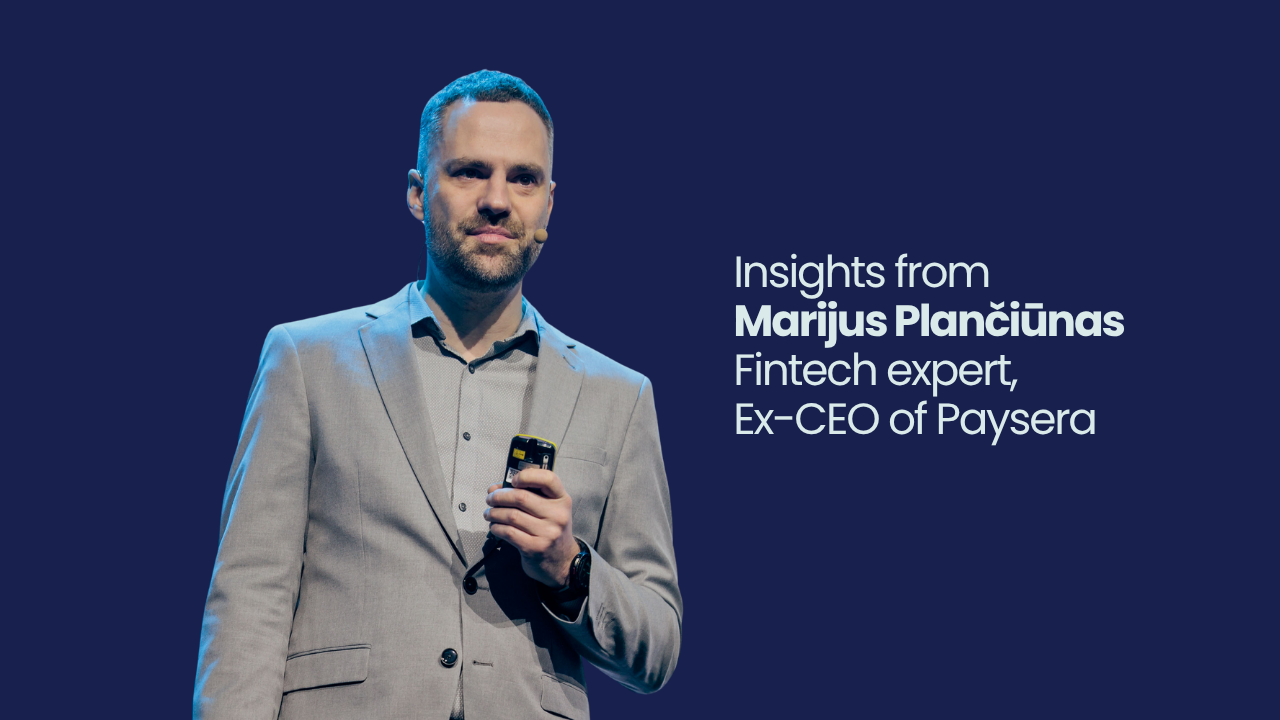
Offices:
United Kingdom
81 Judes Road
Egham TW20 ODF
Latvia:
Tech Recruitment Ltd.
no. 40203237813,
Zalites Str. 50, LV-2111

Eleven years at Gaumina, one of the Baltic states' biggest digital agencies, gave Marijus a deep understanding of the internet itself.
"I can literally tell how the signal is traveling right now as we speak and what's happening behind the scenes," he says.
Then came high-availability news portals and building his first FinTech from scratch during what he calls "the wild ages where regulatory was not that strict yet."
Finally, Paysera, one of the world's oldest FinTechs. His mission? Help them grow 3-4x without collapsing. They did, implementing the "tribes concept" company-wide.
"That comes from the C-level," Marijus explains. "They have to understand what exactly that is. And that way the whole company will enjoy the transformation."
I ask him about the risks that come with growth. His answer is direct.
"Becoming from a small company to a medium-sized company is a dangerous phase, which can lead to serious problems if not done right."
The systems that work for 15 people will hurt you at 50. If you don't manage that transition deliberately, you burn cash, lose talent, and miss opportunities.
When I ask about measuring team performance, Marijus goes beyond the usual KPIs.
"Everybody knows what needs to be done. The company is profitable. The investors are happy. The product brings value to the customers," he says. "In that sense, it doesn't really matter what type of methodology you're using."
It's about organizational maturity, not frameworks.
I bring up the hiring challenge most companies face, that painful gap between realizing you need someone and actually having them on board. Marijus doesn't hesitate.
"I don't believe there is a stage where you need to hire or you don't need to hire. It's a constant process. At any given point of time a manager should always have one or two candidates they can hire quickly."
His advice? Build relationships now. Interview occasionally. Because when you need someone, you need them immediately, not in three months.
Then Marijus shares something that surprises many founders:
"Having an internal team statistically is actually more expensive and slower in terms of development rather than to buy a contract from the market. It's like a proven thing."
He's quick to clarify, this isn't about choosing one over the other. For experiments and MVPs, external is faster. For core competencies, build internally.
"It's not just tech recruitment. It's much more, actually. It's basically staff augmentation," he adds.
Understanding the full spectrum, permanent hires, contractors, agencies, is what separates companies that scale successfully from those that struggle.
As our conversation wraps up, I realize Marijus isn't selling a methodology. He's just someone who's scaled teams 4x and helped companies navigate the critical thresholds that most struggle with.
The work of growth isn't about having all the answers. It's about knowing which questions to ask and which battles are worth fighting. It's about growing fast without collapsing. And that's the only kind of growth that actually matters.